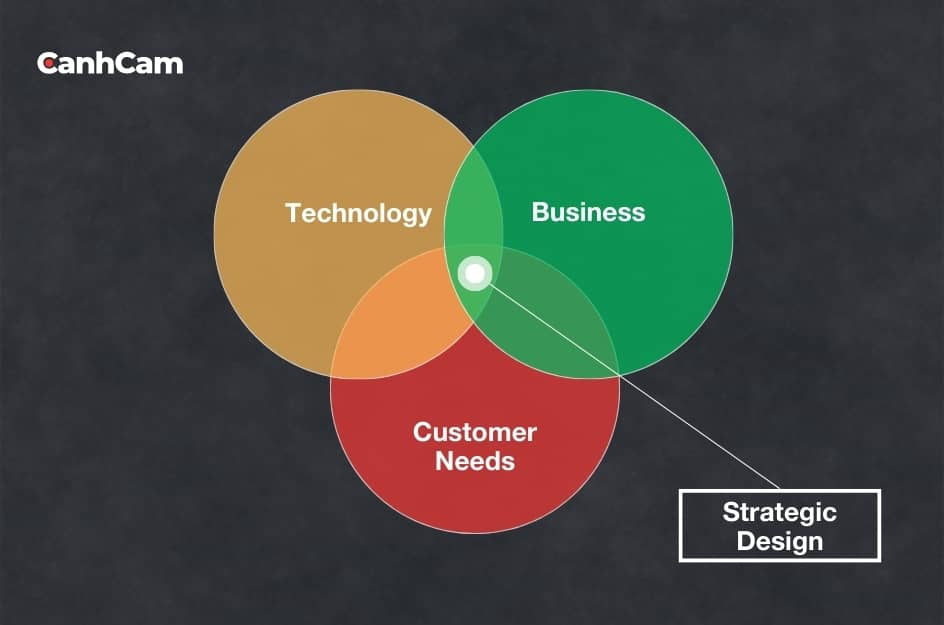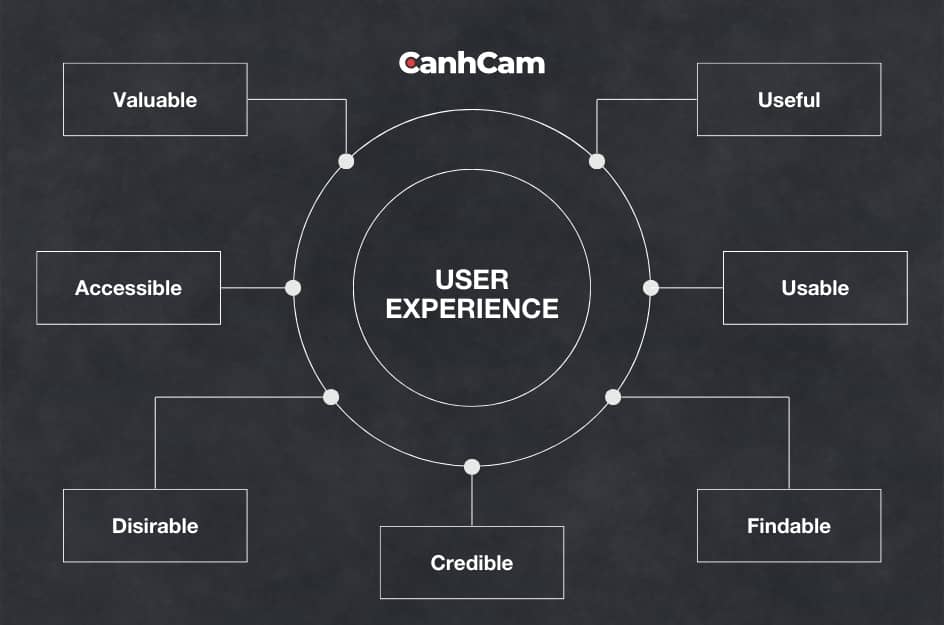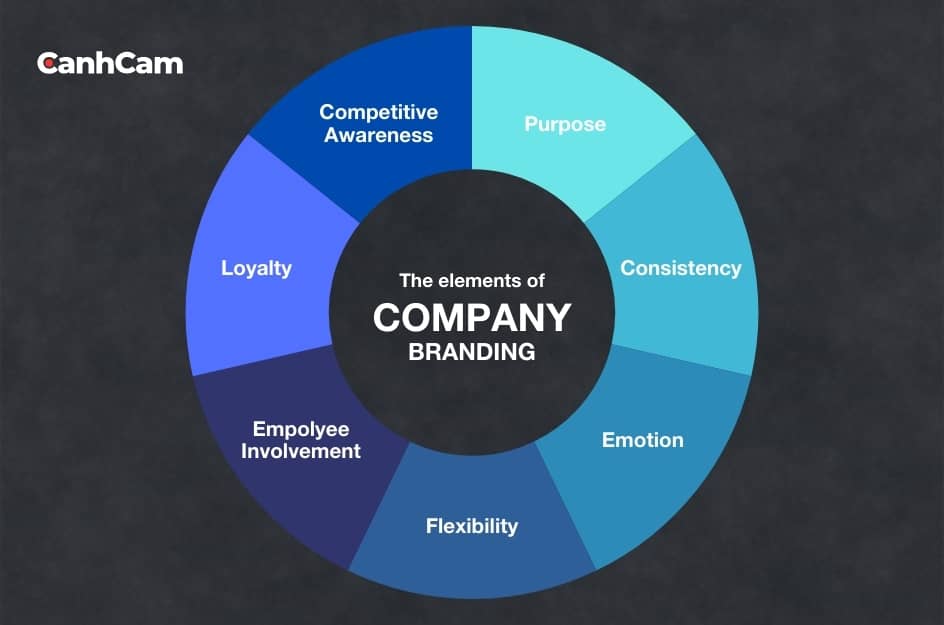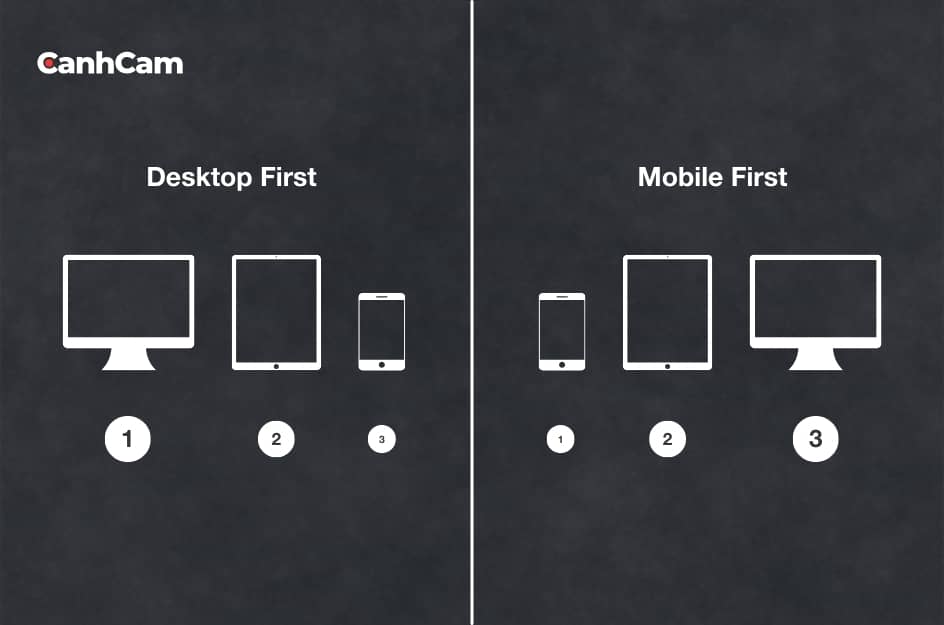Today, responsive design is key. Websites need to adapt to different devices, like smartphones and tablets, to ensure a smooth user experience. This shift reflects not just a visual change, but a focus on functionality and user needs.
This is where Website Design Strategy comes in. It's not just about making your website look good. It's about creating a website with a clear purpose, considering factors like:
- User experience (UX): How easy and enjoyable is it for visitors to use your website?
- Accessibility: Can everyone access your website, regardless of ability?
- Business goals: Does your website help you achieve your business objectives, like generating leads or sales?
- By taking a strategic approach to website design, you can create a website that works for your business and your visitors.
Ready to take your website to the next level? Canhcam Agency can help you develop a website design strategy that transforms your online presence.
What is a Strategy in Website Design?
A strategic website design goes beyond just making your website look nice. It's a well-defined plan that considers both how your website looks and how it functions. This plan focuses on creating a positive experience for visitors while also achieving your specific goals for the website.
- Focus on User Journey: A strategic website design carefully thinks about the steps you want visitors to take on your site. It uses design elements to guide them through this journey, making it easy for them to find the information they need or complete desired actions.
- Brand Alignment: Strategic website design ensures your website reflects your brand identity. This means using colours, fonts, and images that are consistent with your overall brand image.
By combining these aspects, a strategic website design creates a website that is both visually appealing and effective in achieving your goals.

.
What is the Importance of a Website Design Strategy?
A well-planned website design strategy is like a roadmap for your online presence. It helps you create a website that's both user-friendly and effective in achieving your business goals. Here's how:
User-Centric Navigation:
Imagine your website as a store and a strategic design prioritizes clear and intuitive navigation. Visitors should be able to find what they're looking for quickly and easily, fostering a positive experience with your brand.
Consistent Branding:
Consistency is key! A strategic website design ensures that all visual elements, like colours and fonts, work together to reflect your brand personality. This creates a strong and memorable identity that resonates with your target audience.
Responsive Design:
People use phones, tablets, and computers to browse the web. A strategic website design incorporates responsiveness, meaning your website automatically adjusts its layout to fit any screen size. This provides a seamless experience for visitors no matter how they choose to access your site.
Understanding User Behavior
Effective website design goes beyond aesthetics. A strategic approach considers the psychology of user behaviour and current design trends. This ensures your website incorporates elements that keep visitors engaged and make it easy for them to achieve their goals.
Turning Visitors into Customers
Think of your website as a salesperson working 24/7. Through strategic design, your website isn't just a collection of pages; it's a carefully crafted journey. This journey guides visitors through your brand story, leading them from exploring your offerings to becoming customers effortlessly.
How does Strategic Website Design Make a Difference?
Strategic website design focuses on creating a positive user experience (UX) from the very beginning. This means putting the needs of your visitors first throughout the design and development process.
Imagine your website as a journey for your visitors. Website Design Strategy considers every step of that journey, making sure it's easy and enjoyable. Here's how:
- Understanding Your Visitors: Strategic design starts by getting to know your target audience. This means researching their habits and what they expect from a website like yours.
- Seamless Navigation: With a strategic approach, buttons, menus, and other elements are placed intuitively, exactly where visitors would expect them to be.
- Clear and Engaging Content: The content on your website is presented in a way that's easy to read and understand, keeping your visitors engaged.
- Intuitive Interactions: Every click, scroll, and action on your website should feel natural and purposeful.

How can Your Website Align with Brand Identity?
When crafting a website design strategy, aligning your website with your brand identity is crucial. Every visual element, from the colour scheme to the fonts, contributes to your brand's overall image. Strategic website design goes beyond aesthetics; it's a deliberate approach that builds brand recognition and trust.
Think about the impact of a consistently placed logo, colours that reflect your brand's personality, and fonts that match your unique voice. These seemingly small choices hold significant power. They create a cohesive online experience that resonates with your customers' existing understanding of your brand.
This rewrite incorporates the keywords naturally and focuses on clear, concise language for improved readability. It highlights the importance of a strategic website design in aligning with brand identity

What is SEO Integration in Website Design?
Imagine your website is having a conversation with search engines. SEO integration is like ensuring the conversation is clear, relevant, and interesting. It's about strategically weaving search engine optimization (SEO) principles directly into the way you design your website. Here's how it works:
Strategies for Incorporating SEO into the Design Process:
- Clear Communication: Search engines need to understand your website to recommend it to users. We don't just stuff keywords in randomly; we place them thoughtfully throughout the site, using elements like titles, descriptions, and image labels. Think of them as signposts that guide search engines to the right information.
- User-Friendly Journey: A well-designed website is a joy to navigate, and that's good for SEO too! Search engines favour sites with a clear structure and easy navigation. This means making sure your website flows logically and visitors can find what they're looking for quickly.
- Speed and Responsiveness: Just like you wouldn't want to wait in a slow line, search engines don't like websites that take forever to load. Optimizing images, using caching techniques, and ensuring a mobile-friendly design all contribute to a website that runs smoothly and ranks higher.
Impact of Strategic Design on Search Engine Rankings:
Strategic website design is all about incorporating Search Engine Optimization (SEO) principles from the very beginning. It's like building your website with a search engine's approval in mind, making it easier for them to understand and recommend your site to users. Here's how this powerful duo works:
- Clear Structure and Friendly Users: Search engines love websites that are well-organized and easy to navigate. By structuring your website logically, you not only keep visitors engaged but also encourage them to explore more. This "dwell time" tells search engines that your content is interesting and relevant.
- Fighting the Bounce: Strategic design is your secret weapon against the dreaded "bounce rate" – when visitors leave after just one page. By presenting information clearly and making navigation simple, you keep people interested and clicking around. The longer they stay, the more likely they are to take action on your site, which can further improve your search ranking.
- A Symphony of Success: Imagine SEO as a grand orchestra, where each element plays a role in creating a beautiful sound. When you integrate SEO into your website design, all the parts work together to create a user-friendly experience that search engines love. This ultimately positions your website as a valuable resource, attracting visitors and ranking higher in search results.
Mobile Responsiveness in Strategic Website Design:
The role of mobile responsiveness
Crafting a design that seamlessly adjusts to diverse screen sizes is synonymous with embracing responsive web design principles. It ensures a consistent and engaging user experience, regardless of whether a visitor accesses the site from a desktop, tablet, or smartphone. In this era where mobile usage continues to surge, a strategic approach demands prioritizing mobile-friendly website development.

Importance for reaching a broader audience.
The importance of mobile responsiveness extends beyond mere adaptability; it directly influences a website's accessibility to a broader audience. Mobile devices have become the primary gateway to online content for many users. Ensuring that your strategic website design caters effectively to this audience enhances your reach, engagement, and ultimately, the success of your digital presence.
Tools for Website Design Strategy
Building a website strategy requires a blend of creativity, UX smarts, and technical know-how. Here are essential tools for each stage:
1. Planning & Research:
- Mind Mapping: Organize ideas and user flows with Miro, MindMeister, or XMind.
- User Research: Understand user needs with surveys (Google Forms, SurveyMonkey) and observe behaviour with user testing tools (UserTesting, Hotjar).
- Competitive Analysis: Analyze competitors (Similarweb, SEMrush) to find opportunities.
2. Design & Prototyping:
- Design Software: Create UIs, wireframes, and prototypes with Adobe XD, Figma, Sketch for UI/UX design, or Adobe Photoshop, Illustrator for visuals.
- Prototyping Tools: Webflow, Proto.io, or Marvel lets you build interactive prototypes for testing.
3. Collaboration & Communication:
- Project Management: Manage tasks and collaborate with Asana, Trello, or Monday.com.
- Communication: Share ideas and feedback with Slack or Microsoft Teams.
4. Website Building & Testing:
- Content Management Systems: Build and manage websites easily with WordPress, Wix, or Squarespace.
- Website Testing Tools: Track traffic, and user behaviour, and identify improvements with Google Analytics or Hotjar.
Tips for Strategies of Website Design
Here are strategic tips to ensure your website stands out and captivates your audience:
1. Planning for Success:
Develop a Roadmap: Craft a detailed plan outlining your website's structure, goals, and how users will navigate it (user journey).
Set Clear Goals: Clearly define what you want visitors to do on your website, like making a purchase or subscribing to a newsletter.
Know Your Audience: Design your website with your target audience in mind, considering their preferences and what they expect to find.
Plan Everything: Thoroughly plan all aspects of your website, from the visual design to the interactive features.
2. Content is King:
Content Audit: Take stock of the content you already have and make sure it's consistent, relevant, and easy for visitors to find what they need.
Search Engine Savvy: Research and use relevant keywords throughout your website to help people find you in search engines.
Engaging Content: Create informative and interesting content that reflects your brand and resonates with your audience.
3. Always Be Improving:
Track and Analyze: Regularly analyze how your website is performing and identify areas where you can improve the user experience.
4. Professional Help:
Consider Collaboration: Think about working with a website strategist who can offer expert advice and help you achieve your goals.
By following these tips, you can develop a strategic website design that is both user-friendly and effective in achieving your business objectives.
Frequently Asked Questions (FAQs)
1. What role does content play in strategic web design?
Content becomes a critical part of a successful web design strategy. The content has to be tailor-made to connect to its target audience, help with SEO techniques and guide the users down the conversion path. Content strategy involves the preparation of appealing words, pictures, videos, and call-to-actions which must all have a business goal.
2. How does strategic web design impact user experience (UX)?
A User Friendly interface is the main issue directly related to the strategic web design which implies intuitive navigation, simple messages and perfect interaction. Taking into consideration what users need and desire, makes systems more user-friendly and effective, resulting in more engagement and sales.
Conclusion
In short, a well-planned website design strategy is essential for businesses today. It's not just about how your website looks, but creating a website that specifically helps you achieve your business goals. Focusing on strategic website design opens doors to better user engagement and a smooth user experience.
By prioritizing this strategic approach, businesses can not only meet their current needs but also be flexible and successful in the ever-changing online world. Strategic website design positions your brand for long-term success by crafting a digital story that connects with your audience and drives your business forward in the digital age.

